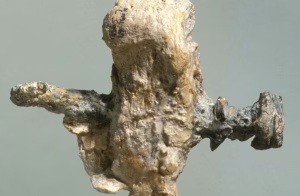
The Romans are well known for their elaborate feasts and decadence, but how much do you know about what they ate? While some items may be familiar, there are other things the Romans actually ate that are, shall we say, a bit different to what we expect.
- Stuffed Dormice (Glires Farciti) – Tiny rodents fattened in clay jars, stuffed with minced pork and honey, then roasted till golden. Basically a medieval Twinkie with fur.
- Flamingo Tongues – A status dish for those who thought chicken wings were too pedestrian. Cooked in vinegar and dates for a sweet, decaying flavour profile. Because nothing says “power” like eating the only part of a flamingo that talks back.
- Garum — Rotting Fish Sauce – Made by fermenting fish guts in the Mediterranean sun until they oozed into a salty sludge. Used on everything. Imagine ketchup, if ketchup could end a friendship.
- Sow’s Womb Stew (Uteri Porcellinae) – Boiled womb, sliced delicately, served with pepper and fish sauce. The Romans called it “nose-to-tail dining.” Everyone else called it “therapy waiting to happen.”
- Boiled Ostrich with Date Sauce – Imported luxury bird, served with honey and vinegar. Proof that “tastes like chicken” was once a death sentence for a bird the size of a gladiator.
- Lamprey Eels – Slippery, fanged parasites kept as pets and fed human flesh. When your aquarium doubles as a crime scene.
- Jellyfish Salad – Pickled in vinegar and honey — for texture, allegedly. Like eating your own phlegm, but fancier.
- Peacock Brains and Parrot Heads – Boiled, whipped, and served to guests you secretly hated. A meal that says, “I’m rich, bored, and a little bit unwell.”
- Blood Sausage and Pig Udders – Everyday fare of the working classes. Black pudding’s Roman granddad — the one everyone pretends not to invite to weddings.
- Lark’s Tongues and Nightingale Hearts – Thousands of birds, one bite each. The first recorded case of influencer dining — all cruelty, no calories.







